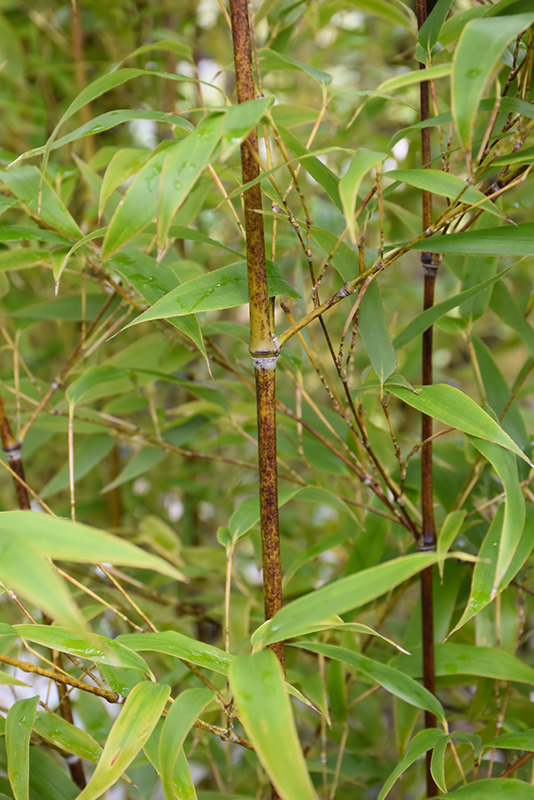Hale Black Bamboo
Description
This rare form of black bamboo is compact and hardier than the species; culms turn jet black very quickly; impressive along borders or as a focal point; a running form that may need roots to be contained
Landscape Attributes
Hale Black Bamboo is an herbaceous evergreen perennial with a rigidly upright and towering form. Its relatively fine texture sets it apart from other garden plants with less refined foliage.
Hale Black Bamboo is recommended for the following landscape applications;
Planting & Growing
Hale Black Bamboo will grow to be about 15 feet tall at maturity, with a spread of 5 feet. It tends to be leggy, with a typical clearance of 6 feet from the ground, and should be underplanted with lower-growing perennials. It grows at a fast rate, and under ideal conditions can be expected to live for approximately 20 years. As an evegreen perennial, this plant will typically keep its form and foliage year-round.
This plant performs well in both full sun and full shade. It prefers to grow in average to moist conditions, and shouldn't be allowed to dry out. It is not particular as to soil type or pH. It is somewhat tolerant of urban pollution. This is a selected variety of a species not originally from North America. It can be propagated by division; however, as a cultivated variety, be aware that it may be subject to certain restrictions or prohibitions on propagation.
Hale Black Bamboo is a fine choice for the garden, but it is also a good selection for planting in outdoor pots and containers. Its large size and upright habit of growth lend it for use as a solitary accent, or in a composition surrounded by smaller plants around the base and those that spill over the edges. It is even sizeable enough that it can be grown alone in a suitable container. Note that when growing plants in outdoor containers and baskets, they may require more frequent waterings than they would in the yard or garden. Be aware that in our climate, this plant may be too tender to survive the winter if left outdoors in a container. Contact our experts for more information on how to protect it over the winter months.

